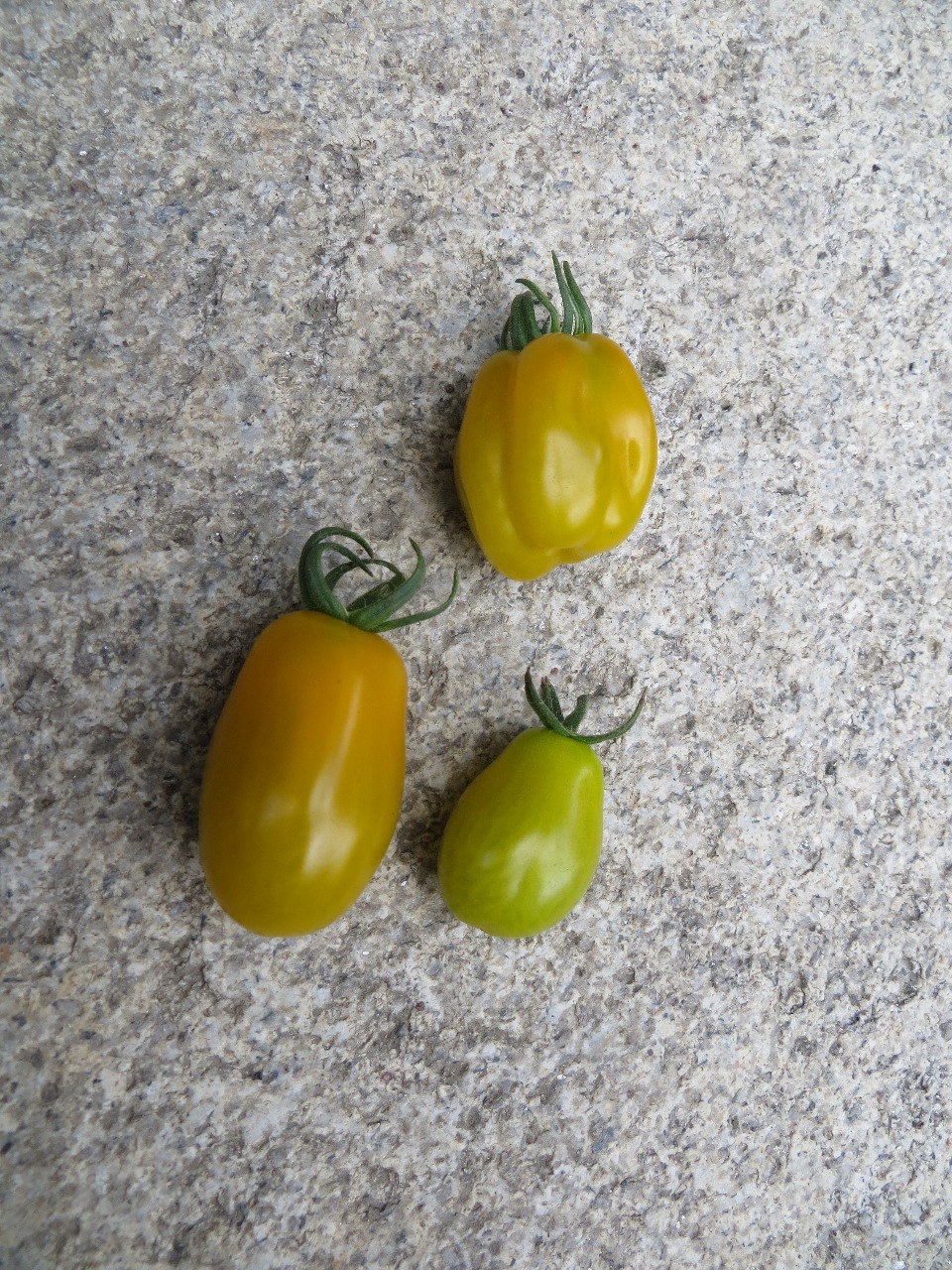I don’t know what’s up with this tomato, but its aggressively ribbed shape looks like muscles to me and I find it amusing (it’s better in real life: I tried several times with different angles and backgrounds and couldn’t figure out how to light it to get a photo I was really happy with…hmm).

We sell a lot of mixed cherry tomatoes. This variety is called Golden Sweet. Their shape is pretty varied in general, I guess. When they’re really happy and properly pollinated, the tomatoes are bigger and more blocky like the one on the bottom left. Some catalogs refer to this as “an Orange Santa type” after a variety that we grew briefly but I haven’t seen for sale in a number of years. And then when they’re smaller because of poor pollination or whatever, they’re often more pear-shaped like the one on the bottom right.
Still thinking about graph representations. Maybe I should start from the things I want to do. A Slitherlink puzzle is a non-directed graph with no crossing edges. Each edge has three possible states: yes/maybe/no, with “maybe” being the initial state.
- Find the face the mouse cursor is in.
- Find the nearest edge and vertex to the mouse cursor.
- Loop through all vertices around a point.
- Loop through all the edges around a face.
- Take a group of contiguous faces and count all outgoing edges.
- Follow a path of edges, both:
- If a vertex has no “yes” edges and only two “maybe” edges, exit through the one you didn’t enter by.
- If a vertex has two “yes” edges do the same (ignoring “maybe” edges? Possibly converting those to “no” edges, hmm.).
- Reasoning about vertices: this edge is “yes” and one of this other pair must be “yes” so the others must be “no.”
Hmm. So I guess I should look at what it takes to loop through vertices around a point with the quad edge structure and see if I need the dual edges or if I can just make it a double edge structure and ignore the dual stuff. Yeah, I can’t quite see it in my head yet, I’ll have to draw it on paper.